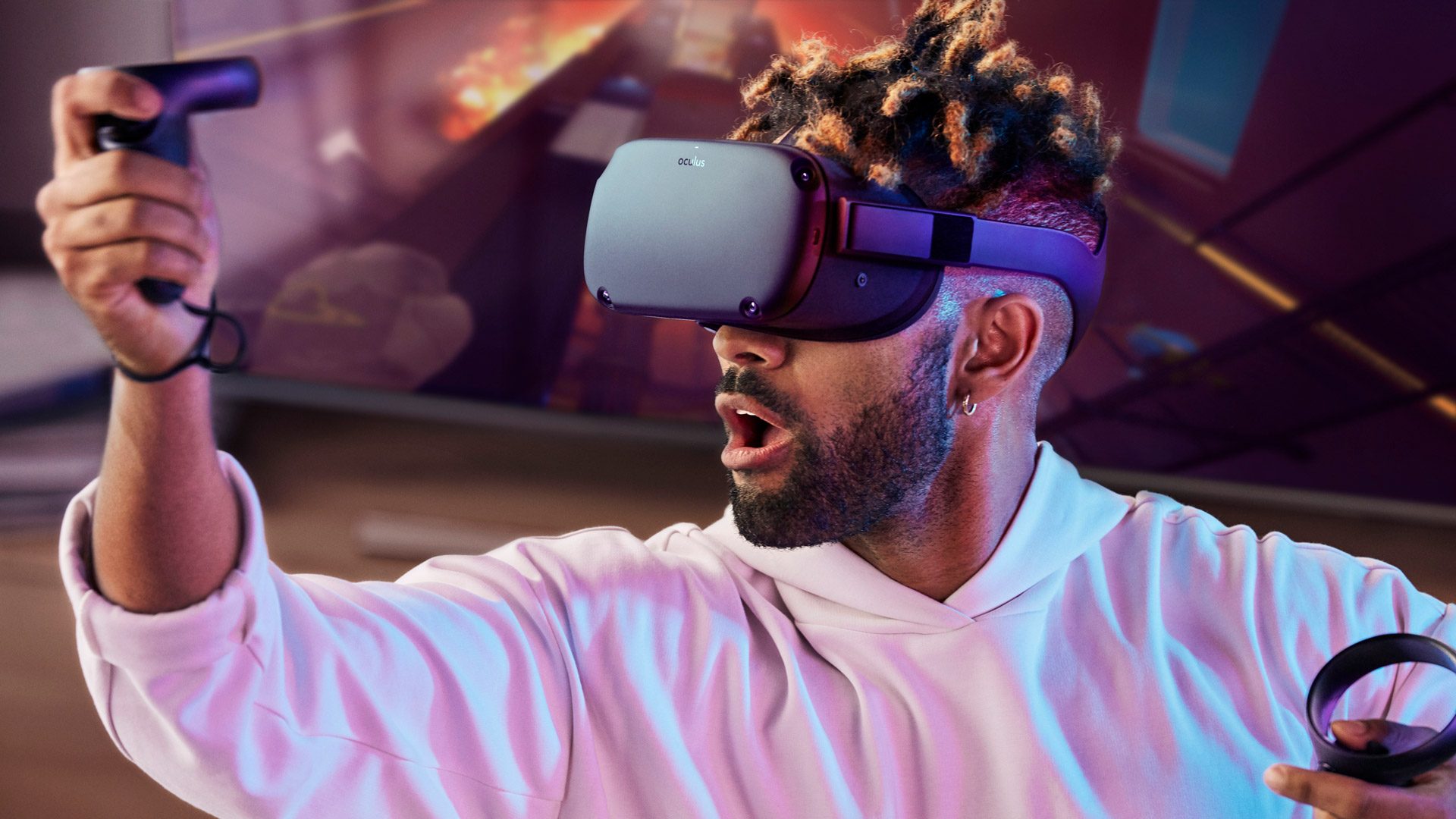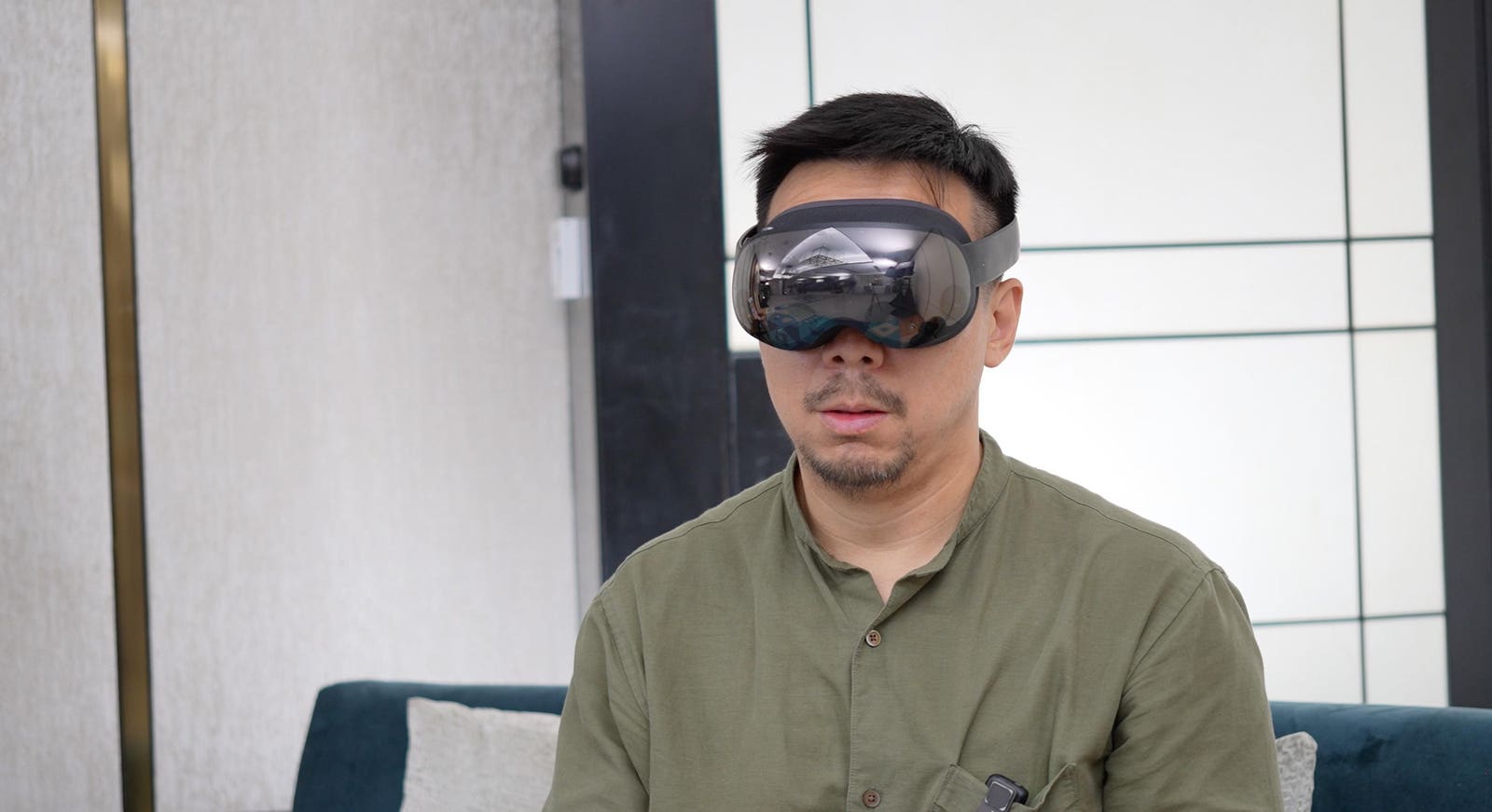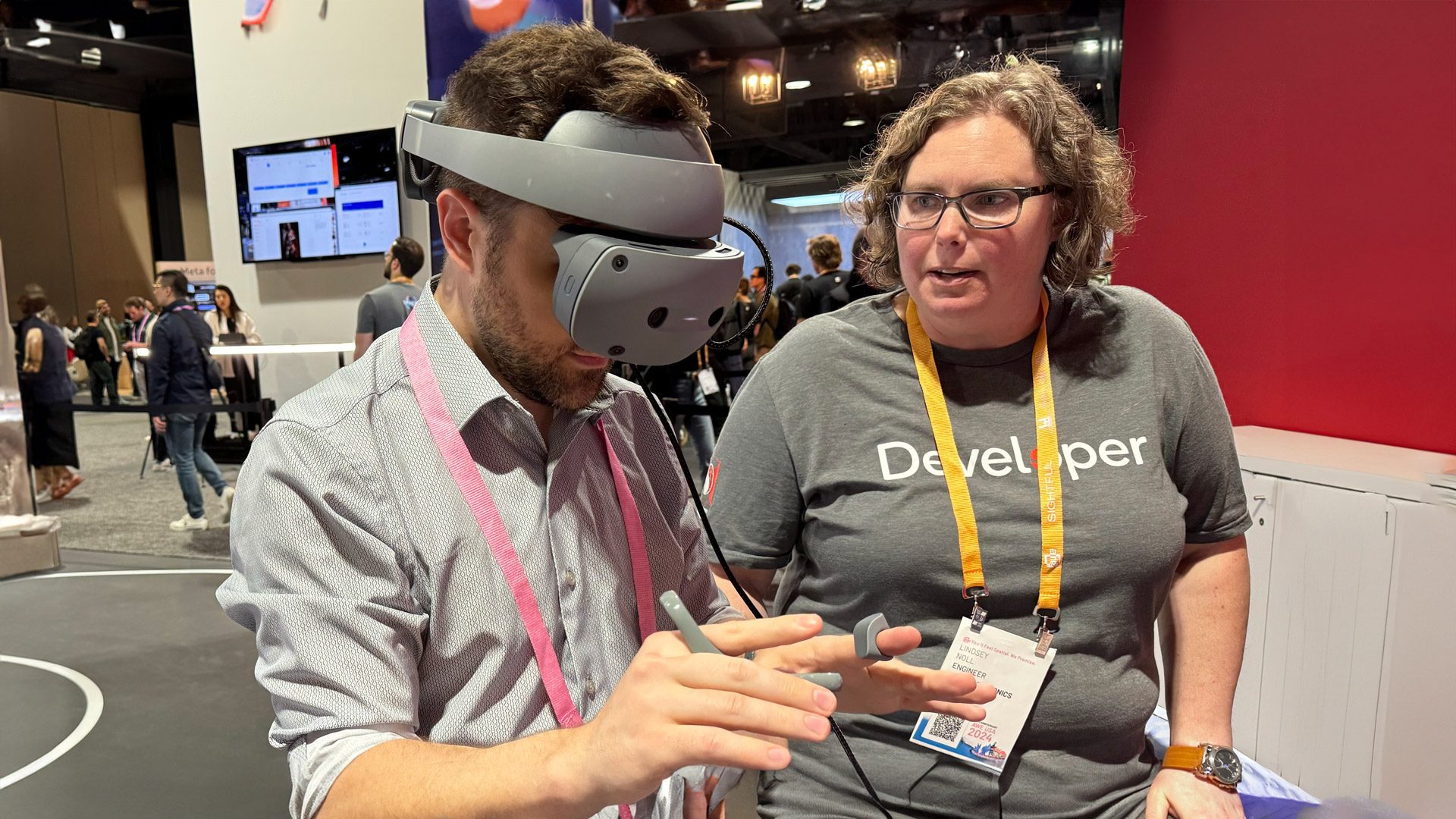Most digital artists are familiar with using a stylus paired with one of the best drawing tablets to create a masterpiece, but now there’s a new kind of technology in the form of VR stylus pens. But what are they? And who are they for? We’re about to explain as we take a deep dive into VR styluses and how they can be used to transform your workflow in 2D and 3D spaces.
Working with 3D modeling software and applications can sometimes be tricky, and a great way to better visualize your projects is to view them through one of the best VR headsets. With that said, many companies in the 3D art and design space are now trying to blur the lines between working IRL as well as in virtual reality with new tools and applications to promote a complete 360° experience. Both Wacom and Logitech have VR styluses coming soon.
For example, Shapelab recently updated its software to include support for both desktop and VR modes (previously VR only) to give artists and game developers the choice to switch between working with a headset or choosing to a more traditional desk setup with a keyboard. and the mouse.
A new VR stylus in development could be the key to helping digital artists, product designers and illustrators perceive their projects in a completely different dimension than they may be used to – with a stylus that can work in a 3D space using AR or VR, and work with you in any format. Forget the best Apple Pencil alternatives, we think VR styluses will be the next big thing for digital artists, and here’s why.
VR stylus explained: how do they work?
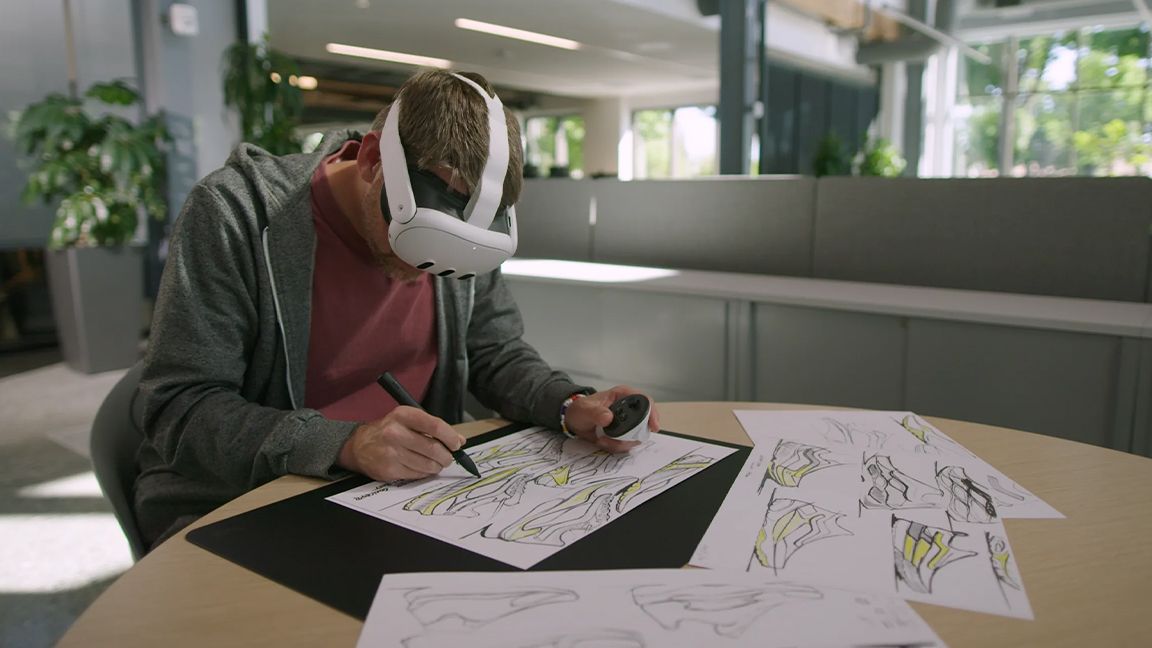
Our Digital Arts and 3D Editor Ian Dean was given a first-hand demo of how these VR stylus pens are expected to work. One example in particular he notes demonstrated a VR stylus being used on a Wacom tablet on a table. The person then puts on a VR headset while still drawing with a stylus and can visualize the design in a 3D space. After removing the VR headset, the artist continues to draw on the table with the same stylus as usual.
You can still see what you’re working on thanks to the video pass feature present in most VR headsets, offering a blend of VR with the ability to see the world around you. The idea of a VR stylus is that it can be used in the same way as a regular stylus for drawing and note-taking, but also has the benefit of working in VR and AR 3D spaces as well, as a tool for artists and designers who work using virtual reality to view their projects in a 360-degree angle.
Check out the video below from Wacom for a visual explanation of what a VR pen might look like.
Daily design news, reviews, how-tos and more, handpicked by editors.
VR Stylus Explained: Why Do I Need One?
So we’ve explained what a VR stylus is and how it works, but who are they really for? Primarily, a pressure-sensitive stylus will mostly benefit creative professionals, although if you’re someone who has never entertained the idea of drawing in a virtual reality space, then a VR stylus could be the perfect gateway to help you join a new future of workflow.
Wacom CEO Nobutaka Ide explains who sees being able to use the VR stylus, saying, “There are so many 3D, CG, virtual and environmental workflows out there, so we really like to offer not only 2D, but also a kind of virtual space- based on the work experience. The use case is huge and our first step is to focus on our creative stream – automotive design, architecture design – in parallel with the educational experience; more flexible space for creative students.”
The use case is huge and our first step is to focus on our creative workflow
Nobutaka Ide, CEO, Wacom
For example, there are a number of ways to work that extend beyond the physical desk, such as working in the cloud, working remotely, working exclusively in VR software, etc. than a way of working.
Many creators have also found that it can feel clumsy to draw with a standard VR controller, lacking ergonomics and control for artistic creation. It’s kind of like the equivalent of using a computer mouse for drawing (although, admittedly, some people really like this method). Therefore, it has become necessary for companies to invest in a stylus that can replace a clumsy VR controller for those who want precision when drawing in virtual reality.
VR Stylus Explained: Who Makes Them?
We’ve already introduced you to the Wacom VR pen, released in 2020, but are there any other models on the market? Yes. There’s also the Logitech MX Ink Stylus for the Meta Quest (released in September). Before that, Logitech created the VR Ink Pilot Edition in 2019, but it required separate external trackers to work.
Unfortunately, there aren’t many other options on the market yet to choose from when buying a VR stylus, but that may soon change as demand grows. Interested in Logitech MX ink? Check out the video below to learn more.
VR stylus explained: what software is supported?
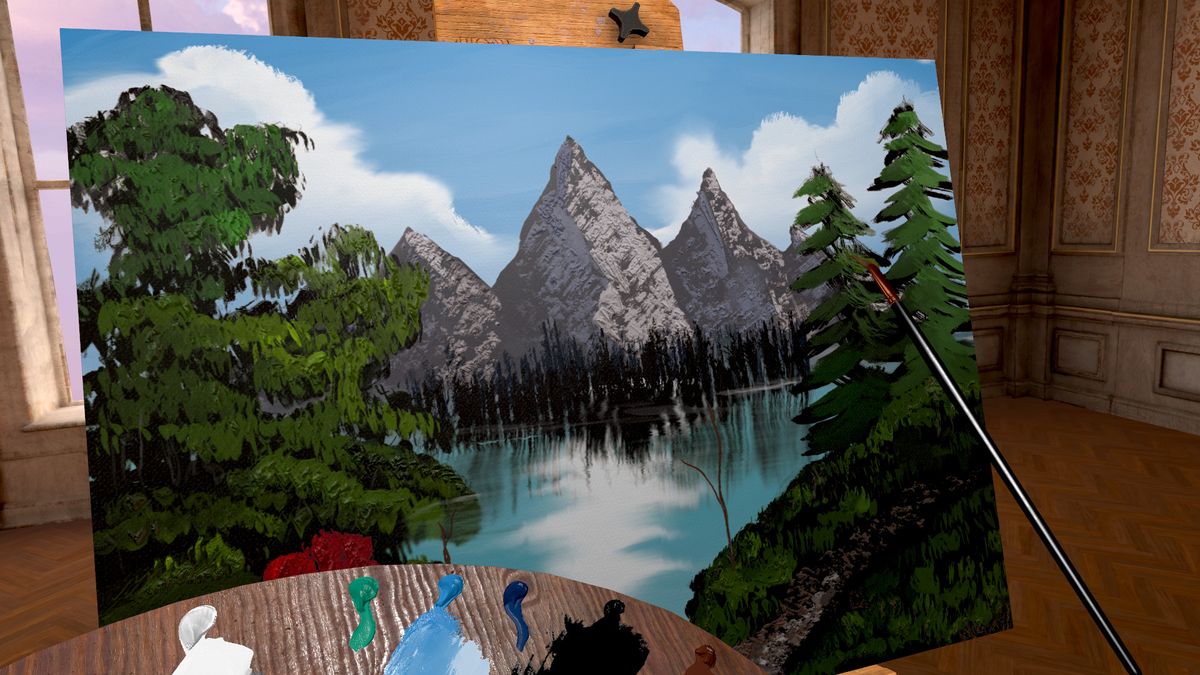
That’s the thing, VR styluses like those from Wacom and Logitech will work with traditional ‘2D’ digital art applications on a drawing tablet on your desk, as well as be viewed inside a VR headset, so your software art favorite can be used. whether it’s Photoshop, Rebelle or Clip Paint Studio.
The difference is that you can also use art software designed to be used in a 3D space and easily switch between creating ‘2D’ art and 3D VR. Below are the best VR art apps on the market right now.
- Tilt brush One of the earliest spatial VR painting apps, but Google pulled support for it some time ago. You can still download it, and it’s open source, so new developers can support it or build their own apps off of it. Works in everything headsets, including PlayStation VR.
- Open the brush This is new and one of the best VR painting apps to use the open source code of Tilt Brush. It can be used on all VR and AR headsets, including Meta, Steam and iPhone.
- Vermilion While other VR art apps here replicate modeling and sculpting, this one perfectly mimics oil painting. You can mix and match paint on an easel in VR, change location, time of day and lighting, and just, well… paint.
- Gravity sketch A professional-grade VR drawing tool aimed at product designers, this app is one of the most commercially usable on my list. It’s free to download for individuals, but studios have to pay – but it’s designed for collaboration with VR and desktop visuals.
- SculptrVR This is a fun modeling app that plays out the process of creating art. You can sculpt characters and worlds using voxels and then play in them and invite friends to come and experience your creations.
- Brush with more This is another spin-off of Tilt Brush, but with a great idea – many people can collaborate on the same application, sculpting and painting. It lacks the same deeper features as some on my list, but it’s great fun.
VR Stylus Explained: Pricing and Availability
How much does a VR stylus cost? Honestly, we’re not 100% sure yet. We know that the upcoming Logitech MX INK will retail for around $130 (or $169.99 with an Inkwell charging dock), which isn’t bad at all if you ask us—at least compared to the price of a normal stylus. high level such as Apple Pencil Pro – which retails for $129.
Previously, Logitech’s Ink Pilot VR stylus had a retail price of $750! Since the market for these VR pens is quite warm at the moment, it is difficult to compare prices for other models and brands. Wacom’s flagship stylus, the Wacom Pro Pen 3 retails for $129.95 / £109.99 – so we’d expect any VR stylus released by Wacom to be in the $200-$300 price range at a guess.
If you’re looking for a cheap alternative to a VR stylus, there’s always Zapbox. We tested this AR device that converts your iPhone into a virtual reality headset, and the Zapbox Gen 2 lets you create your own 3D art. The all-in-one mixed reality kit comes bundled with a pair of AR “stick” controllers that look like PlayStation Move controllers if they were made in Minecraft, all for $89.99. So it’s not exactly the same as a VR stylus — you can’t switch from creating 2D art to VR — but it’s a good tester to see if this kind of creative workflow is for you.
